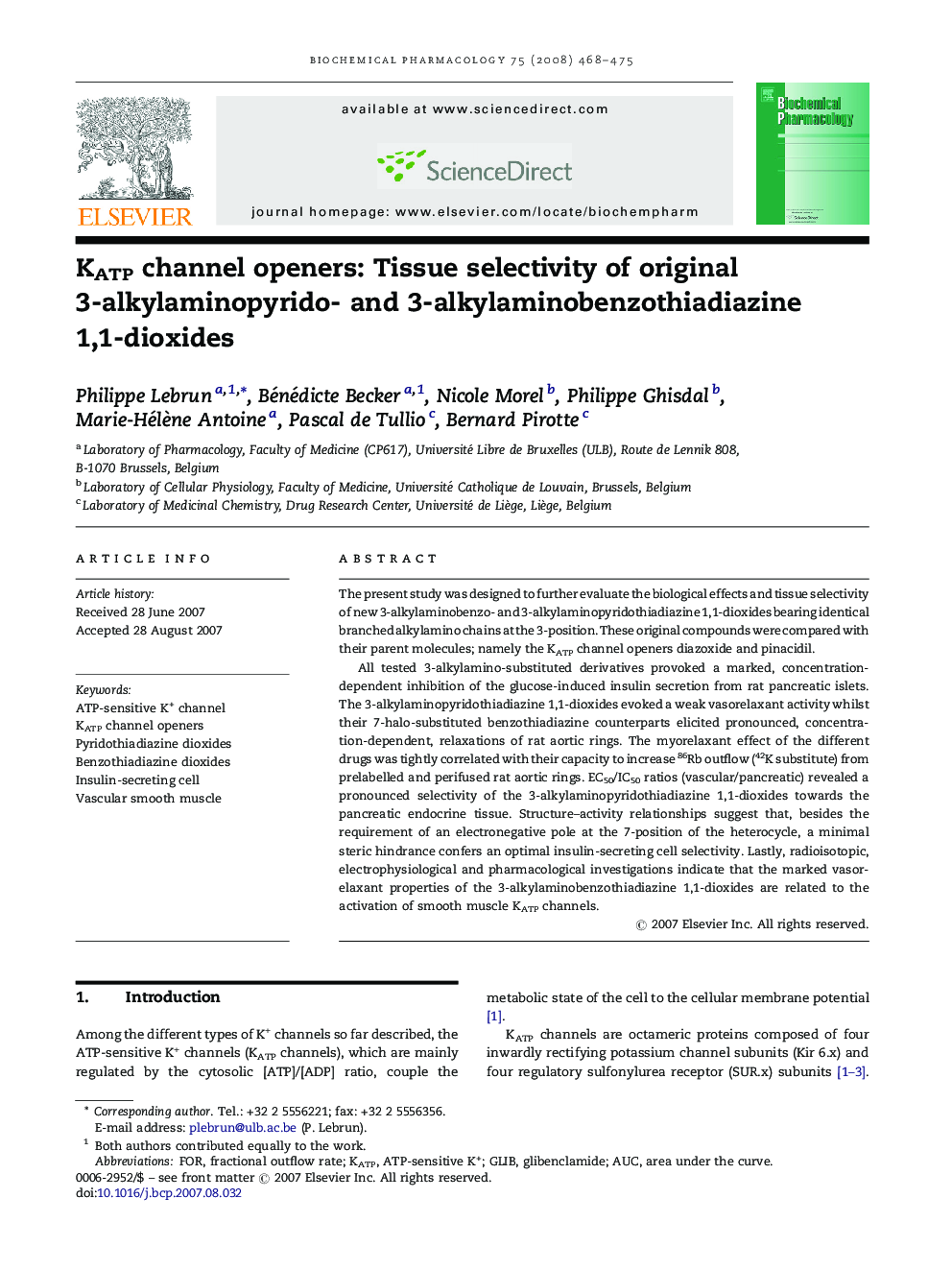| Article ID | Journal | Published Year | Pages | File Type |
|---|---|---|---|---|
| 2514644 | Biochemical Pharmacology | 2008 | 8 Pages |
The present study was designed to further evaluate the biological effects and tissue selectivity of new 3-alkylaminobenzo- and 3-alkylaminopyridothiadiazine 1,1-dioxides bearing identical branched alkylamino chains at the 3-position. These original compounds were compared with their parent molecules; namely the KATP channel openers diazoxide and pinacidil.All tested 3-alkylamino-substituted derivatives provoked a marked, concentration-dependent inhibition of the glucose-induced insulin secretion from rat pancreatic islets. The 3-alkylaminopyridothiadiazine 1,1-dioxides evoked a weak vasorelaxant activity whilst their 7-halo-substituted benzothiadiazine counterparts elicited pronounced, concentration-dependent, relaxations of rat aortic rings. The myorelaxant effect of the different drugs was tightly correlated with their capacity to increase 86Rb outflow (42K substitute) from prelabelled and perifused rat aortic rings. EC50/IC50 ratios (vascular/pancreatic) revealed a pronounced selectivity of the 3-alkylaminopyridothiadiazine 1,1-dioxides towards the pancreatic endocrine tissue. Structure–activity relationships suggest that, besides the requirement of an electronegative pole at the 7-position of the heterocycle, a minimal steric hindrance confers an optimal insulin-secreting cell selectivity. Lastly, radioisotopic, electrophysiological and pharmacological investigations indicate that the marked vasorelaxant properties of the 3-alkylaminobenzothiadiazine 1,1-dioxides are related to the activation of smooth muscle KATP channels.
